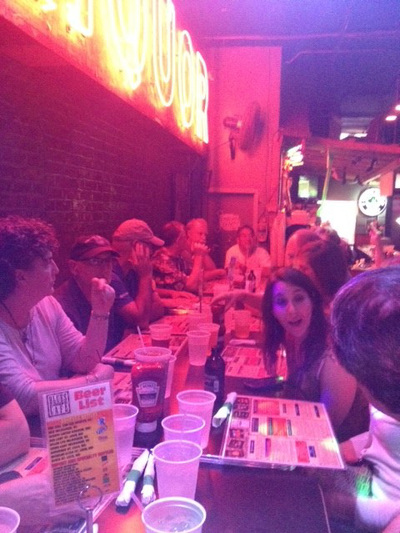If you are expecting a lecture setting where a doctor stands in front with a power point and the rest sit and take notes, this is not what you will get at CCVC. If you want to have a voice, share ideas, and learn from other optometrists, students, residents from all walks of life, this meeting is one you won’t want to miss. When I first came to this meeting, I didn’t know what to expect. As a new graduate just starting residency in vision therapy, I was a little shy and apprehensive to be surrounded by some well-known doctors in the behavioral optometry world. However, what I got out of this meeting was more than what I imagined.
The entire group was relatively small, providing a more intimate setting for learning. It consisted of about forty doctors, students, and residents from all over the world. On the first day, we were given the theme of the meeting, “Errors, Expected, and Competencies…According to Whom?”. I learned that every year for the past twenty years, a different theme is presented to the group that has three subsequent open-ended questions proposed for discussion for each day of the meeting. Dr. Paul Harris, President of OEP, opened the meeting with an introduction. He explained the way the meeting works where we are broken up into four groups that incorporate “simple sharing”, “reverent listening”, and “corporate sharing” into our discussion.
Simple sharing means that when the question is presented, each person of the group gives their own input and opinions on the question presented. “Reverent Listening” means that when each person shares, there is an understanding that everyone listens to his or her viewpoints and does not interject or interrupt when they are sharing. “Corporate sharing” happens after simple sharing and reverent listening when we acknowledge the common understanding and viewpoints of the group as a whole. After this, we resume the meeting altogether and each group presents their commonalities which opens the floor for questions and more thoughts among the entire group.
Communication is a key element in this conference. The input of ideas, knowledge, and experience is what drives this meeting and what it depends on. The members in my group ranged from an incoming first year optometry student to a past president of OEP. Everyone is expected to contribute and it was interesting to see how such different experiences can come together to a common understanding.
As the meeting went on, I realized that this meeting is nothing I’ve ever experienced before and nothing like any other meeting I’ve attended in the past. I did not feel like I was in a classroom expected to take notes on whatever subject the lecturer was speaking about. I did not feel like I didn't know as much as the other doctors. At this meeting you are treated as an equal, a colleague, and an individual that everyone can learn from. I had conversations that included optometry and some that went beyond that to music, art, and literature. To me, the meeting was more of a mindful social gathering with deep thought-provoking discussions.
After Saturday’s meeting we all went out to dinner at a popular barbecue restaurant on the infamous Beale Street in Memphis that had a live blues band. The barbecue ribs were unbelievably delicious, nothing I've ever had before. It was the fall-off-the-bone and melt-in-your-mouth kind of delicious! Afterwards, we walked around Beale Street, a long two-mile street full of people, entertainers, bars and restaurants. Being my first trip to Memphis, I was amazed at all the culture and diversity on one street.
Although we all were optometrists, residents, or students, everyone had their own experiences and everyone had a voice. It was a meeting distinct from all the other optometry meetings. One always hopes to gain something from meetings attended, knowing that some meetings provide more of an opportunity to gain and assimilate knowledge than others. Not knowing what to expect prior to “The Memphis Meeting” as CCVC is informally known, adds to its intrigue. I came away with the sense that Behavioral Optometry encompasses a great deal about our profession, but at the same time represents a small percentage of the way in which our profession is practiced. The style of this meeting each year enables a spotlight to be placed on specific aspects of behavioral optometry and challenges attendees to think about how these concepts can be incorporated into their mode of practice. I would highly recommend this meeting to anyone in their optometric career whether student or private practitioner to experience this type of meeting and how it can impact the profession.







 RSS Feed
RSS Feed

